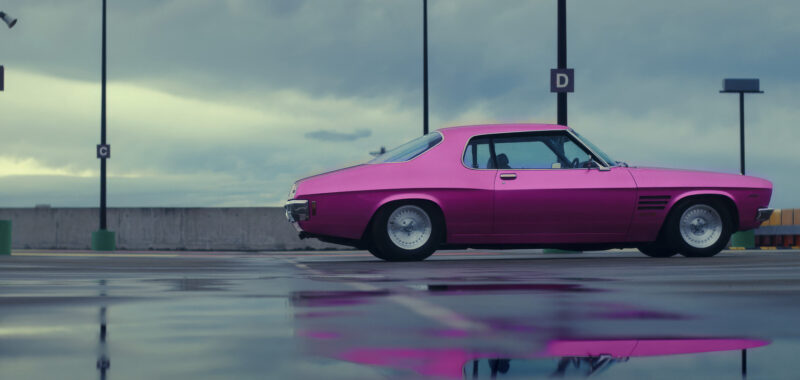MELBOURNE, Australia — Rekospective, the punningly titled retrospective of Reko Rennie at the Ian Potter Centre, the arm of the National Gallery of Victoria that houses its Australian collection, boldly challenges binaristic distinctions between “traditional” Aboriginal and contemporary art through works drawn from the artist’s expansive two-decade career.
Visually, Rekospective leans into the artist’s street art roots. In works such as “Regalia” (2013), Rennie uses a crown symbol not only as homage to Jean-Michel Basquiat, but also to contend with questions of Indigenous sovereignty and rightful rule in Australia. The artist’s first tag, “OA” (short for “Original Aboriginal”), is also ever-present, alongside other indicators of graffiti culture such as stenciling and spray paint as both subject and material. For “Message Stick (Totem Pole)” (2011), for instance, Rennie stacked a series of spray paint cans atop each other in his version of a message stick, an object carried by Indigenous Australians to communicate across vast distances.
Rennie is known for his reimagining of the Kamilaroi diamond pattern, which is typically carved into trees as a men’s initiation symbol, to assert the continuity of Indigenous cultures to the present day. This diamond pattern is visible across many of Rennie’s installations, including ”OA_RR” (2016–17), a bright, hand-painted 1973 Rolls Royce Corniche that greets you from the NGV’s foyer. The accompanying video work “OA_RR” (2017) sees Rennie drive donuts in Kamilaroi Country as a contemporary car culture-infused homage to sand engravings traditionally made for ceremonial purposes, collapsing the distinction between past and present.

In a similar act of subverting linear time, Rekospective forgoes the chronological narrative often utilized in institutional solo exhibitions, bringing works into dialogue via shared themes and symbols instead. On top of the aforementioned crowns and diamond pattern, recurring visual motifs include camouflage print, kangaroos, the Aboriginal flag, warriors, bikes, and totems. Rennie continuously refers to his back catalog in works such as “Initiation_OA_RR” (2021), a thematic and visual follow-up to the aforementioned film work that sees the artist drive a custom-painted pink 1973 Holden Monaro through the streets of Melbourne’s western suburbs, where he grew up. In the climax of the film, Rennie drags the car through a series of burnouts that visibly mark the pavement, set against a grand operatic score. Importantly, his process of self-referencing does not feel indulgent because of the urgency of the issues he speaks to, including police brutality, Indigenous deaths in custody, and land rights.
Rekospective is one of the few shows I’ve seen at the NGV where the gallery’s often heavy-handed exhibition design (I hear that they have an in-house wallpaper printer) supports the visual and thematic ambitions of the exhibition. For instance, Rennie’s use of camouflage print in “ALWAYS” (2021), a suite of four canvases, continues in the custom wallpaper behind the work, metaphorically breaking his painterly expression out of the constraints of the museum object. The vivid palette of pinks, yellows, and blues on canvas and purple, navy, and green on the walls also challenges stereotypes about “authentic” Aboriginal art, such as its associations with “natural” colors and earth tones.
The NGV missed an opportunity to match such a significant exhibition of a living Australian artist with an accompanying catalog, while a collection show themed on animals across the hall is accompanied by a slick tome. Still, Rekospective feels like an important art historical moment. In wall texts, the artist recalls feeling the disconnection between the Aboriginal objects on display during childhood visits to the NGV and his own lived experience growing up in Melbourne. Decades on, Rennie created an exhibition that I think his childhood self would have revered.



REKOSPECTIVE: The Art of Reko Rennie continues at the Ian Potter Centre: NGV Australia (Federation Square, Flinders Street & Russell Street, Melbourne, Australia) through January 27. The exhibition was organized by the museum.

